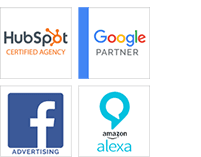
Multi-Channel Content Marketing Plan for Maximum Impact
Why a Multi-Channel Content Marketing Plan Matters in 2025
In today’s fragmented digital landscape, a single-channel approach no longer cuts it. A content marketing plan that spans multiple platforms ensures your brand meets audiences where they are—whether on social media, blogs, email, or video. According to Semrush, brands using 3+ channels see 2.5x higher engagement than those relying on one.
But how do you create a cohesive strategy without spreading resources too thin? Let’s break it down.
Step 1: Define SMART Goals for Your Content Marketing Plan
Start by aligning your content marketing plan with business objectives. Use the SMART framework:
- Specific: “Increase organic traffic by 30% in Q4.”
- Measurable: Track progress with tools like Google Analytics.
- Achievable: Allocate budget for SEO and paid ads.
- Relevant: Focus on channels where your audience spends time.
- Time-bound: Set quarterly milestones.
Beak down your goals into smaller, actionable tasks. For example, if your goal is to increase organic traffic, focus on creating 2-3 high-quality blog posts per month targeting long-tail keywords. Additionally, ensure your goals are aligned with your overall business strategy. For instance, if your company is launching a new service, your content marketing plan should include promotional content to support that launch.
Step 2: Understand Your Audience and Buyer Personas
Before creating content, you need to know who you’re speaking to. Develop detailed buyer personas to guide your strategy:
- Demographics: Age, location, income level.
- Pain Points: What challenges do they face?
- Content Preferences: Do they prefer blogs, videos, or infographics?
Use surveys, social media polls, and analytics data to refine your personas. Tools like HubSpot’s Make My Persona can help you create detailed profiles. Use surveys, social media polls, and analytics data to refine your personas. Tools like HubSpot’s Make My Persona can help you create detailed profiles. Additionally, consider conducting interviews with your existing customers to gain deeper insights into their needs and preferences.
Step 3: Audit Existing Content and Channels
Before launching new efforts, review what’s working:
- Analyze top-performing posts.
- Identify gaps (e.g., no video content despite high demand).
- Map content to buyer journey stages (awareness, consideration, decision).
Learn more by reading: Want to Get Valuable Buyers? The Key is the “Ideal” Buyer Persona
Need help auditing? Read our step-by-step walkthrough white book: Creating Buyer Personas For Your Business
Use tools like Screaming Frog or SEMrush to conduct a technical SEO audit and identify broken links, duplicate content, or missing meta tags. Additionally, analyze your competitors’ content to identify opportunities for differentiation. For example, if your competitors are focusing heavily on blog posts, consider creating video content to stand out.
Step 4: Tailor Content for Each Platform
Each platform demands unique content formats:
- LinkedIn: Long-form thought leadership.
- Instagram: Visual stories and Reels.
- Email: Personalized newsletters with CTAs.
Repurpose content across platforms. For example, turn a blog post into a LinkedIn article, an Instagram carousel, and an email newsletter. Additionally, consider the timing of your posts. For instance, LinkedIn posts perform best during business hours, while Instagram posts may perform better in the evenings or on weekends.
1
Step 5: Create a Content Calendar
A well-organized content calendar ensures consistency and helps you stay on track. Include:
- Publishing dates.

- Content themes (e.g., seasonal real estate trends).
- Platform-specific campaigns.
Use tools like Trello or Asana to collaborate with your team and assign tasks for each piece of content. Additionally, plan for seasonal content in advance. For example, create holiday-themed posts or year-end review articles well ahead of time to ensure they’re ready to go when the time comes.
Step 6: Optimize for SEO and Engagement
SEO is the backbone of any successful content marketing plan. Focus on:
- Keyword research: Use tools like SEMrush or Ahrefs to find high-volume, low-competition keywords.
- On-page SEO: Optimize meta titles, descriptions, and headers.
- Internal linking: Guide readers to related content (e.g., SEO Tips for Your Websites).
Use schema markup to enhance your search engine visibility. For example, add FAQ schema to your blog posts to increase the chances of appearing in featured snippets. Additionally, focus on creating high-quality backlinks by reaching out to industry influencers or guest posting on reputable websites.
Step 7: Track and Optimize Performance
Use tools like Google Analytics, SEMrush, or HubSpot to:
- Monitor traffic sources.
- Measure conversion rates.
- A/B test headlines and CTAs.
Set up custom dashboards in Google Analytics to track key metrics like bounce rate, time on page, and goal completions. Additionally, conduct regular performance reviews to identify trends and areas for improvement. For example, if you notice that video content is driving more engagement, consider allocating more resources to video production.
Step 8: Iterate and Scale
Regularly update your content marketing plan based on data. Conduct quarterly reviews of your content performance and adjust your strategy accordingly. For example, if video content is driving more engagement, allocate more resources to video production. Additionally, consider experimenting with new formats or platforms to stay ahead of the competition.
Tools to Streamline Your Content Marketing Plan
Here are some tools to make your life easier:
- Content Creation: Canva, Adobe Spark.
- SEO Optimization: Yoast SEO, SEMrush.
- Social Media Scheduling: Hootsuite, Buffer.
- Analytics: Google Analytics, HubSpot.
Conclusion
In today’s digital landscape, a well-crafted multi-channel content marketing plan is not just an option—it’s a necessity. By setting SMART goals, understanding your audience, auditing your existing content, and tailoring content for each platform, you can maximize engagement and reach your target audience effectively.
Looking ahead, emerging technologies such as AI-driven content personalization, voice search optimization, and interactive media will further shape content marketing in 2024 and beyond. Brands that stay agile and embrace these innovations will gain a competitive edge.
Now is the time to refine your content marketing approach. Start by evaluating your current strategy, experimenting with new formats, and staying data-driven. With the right plan in place, your brand will not only capture attention but also drive meaningful engagement and conversions.









